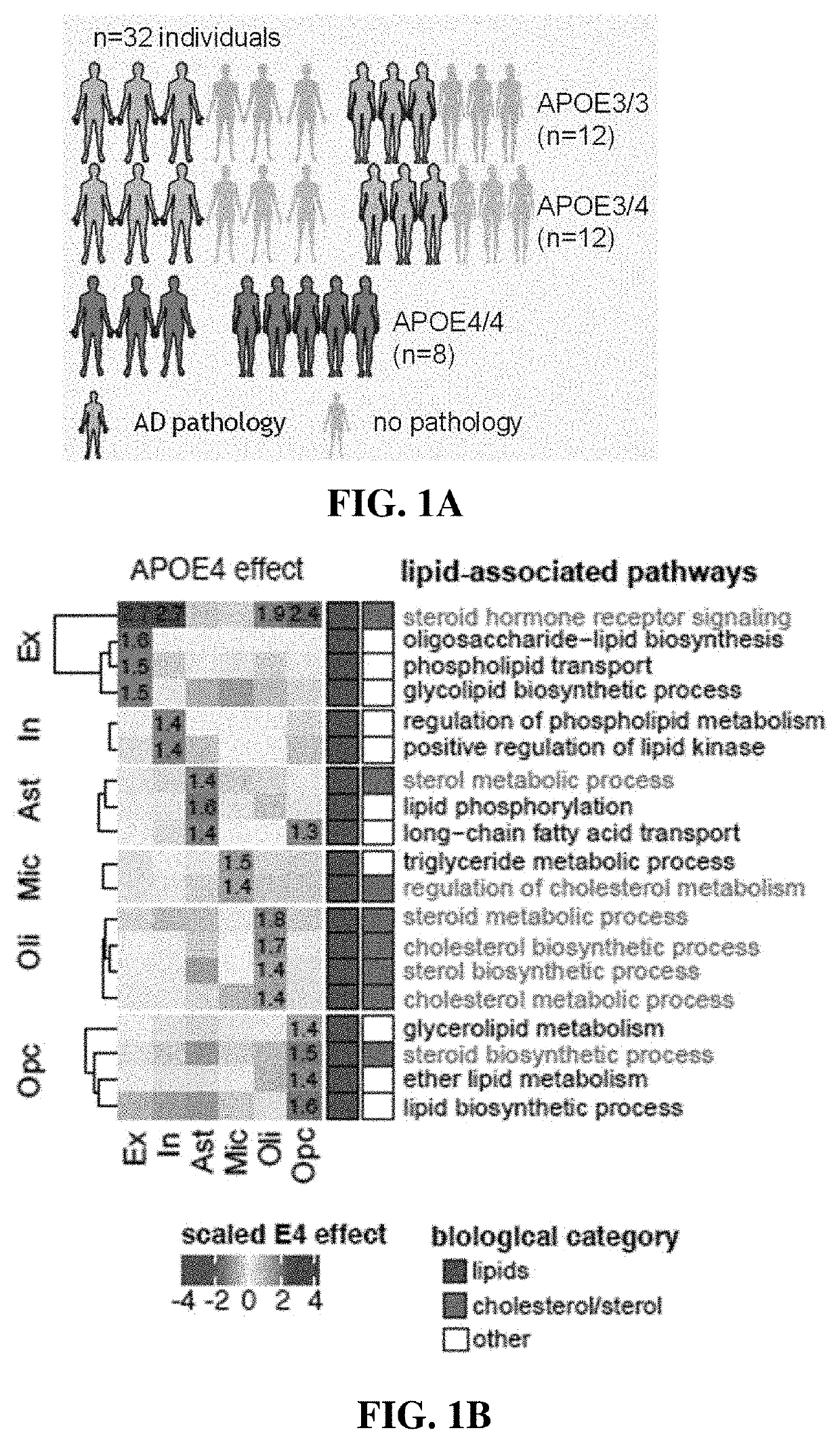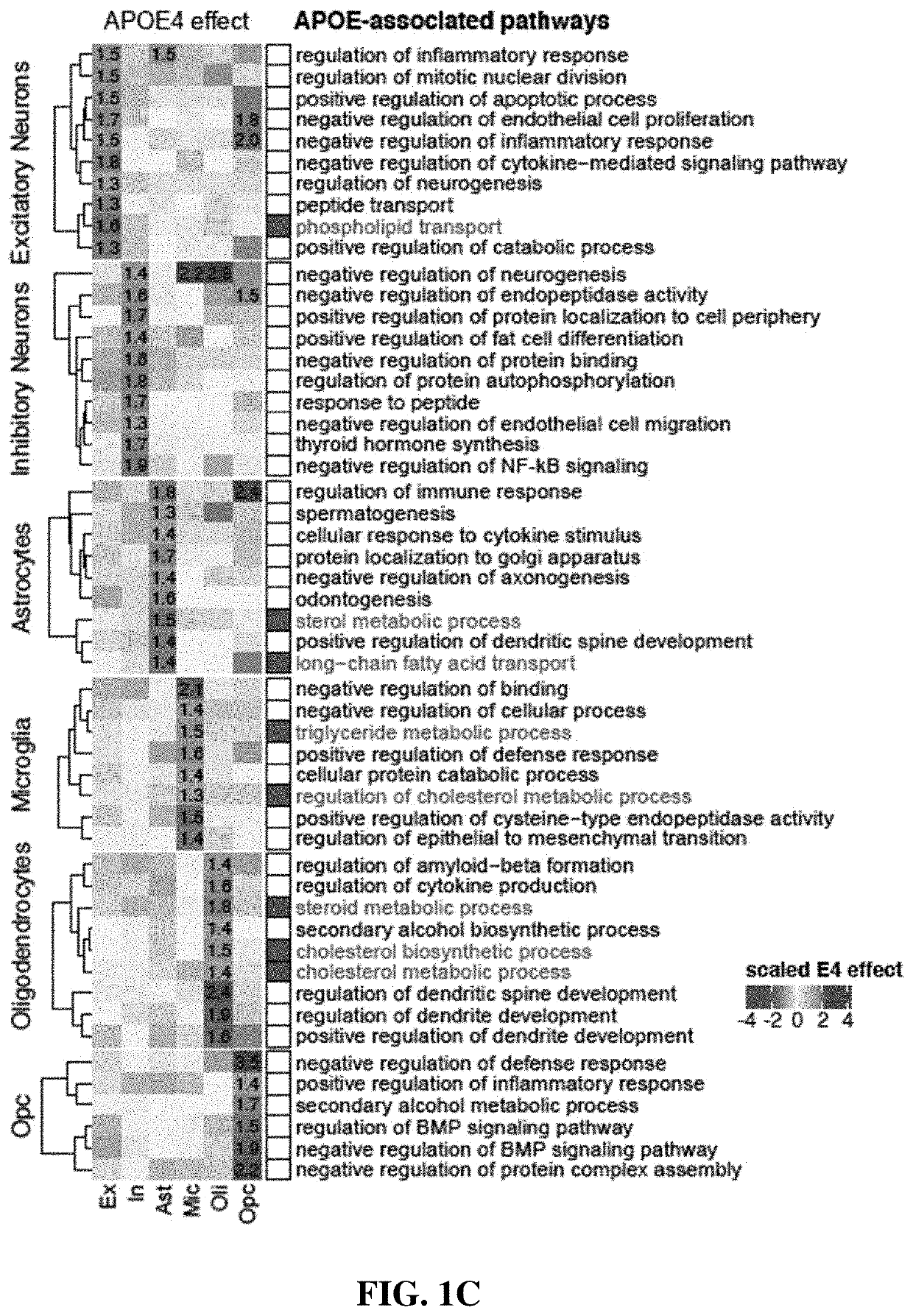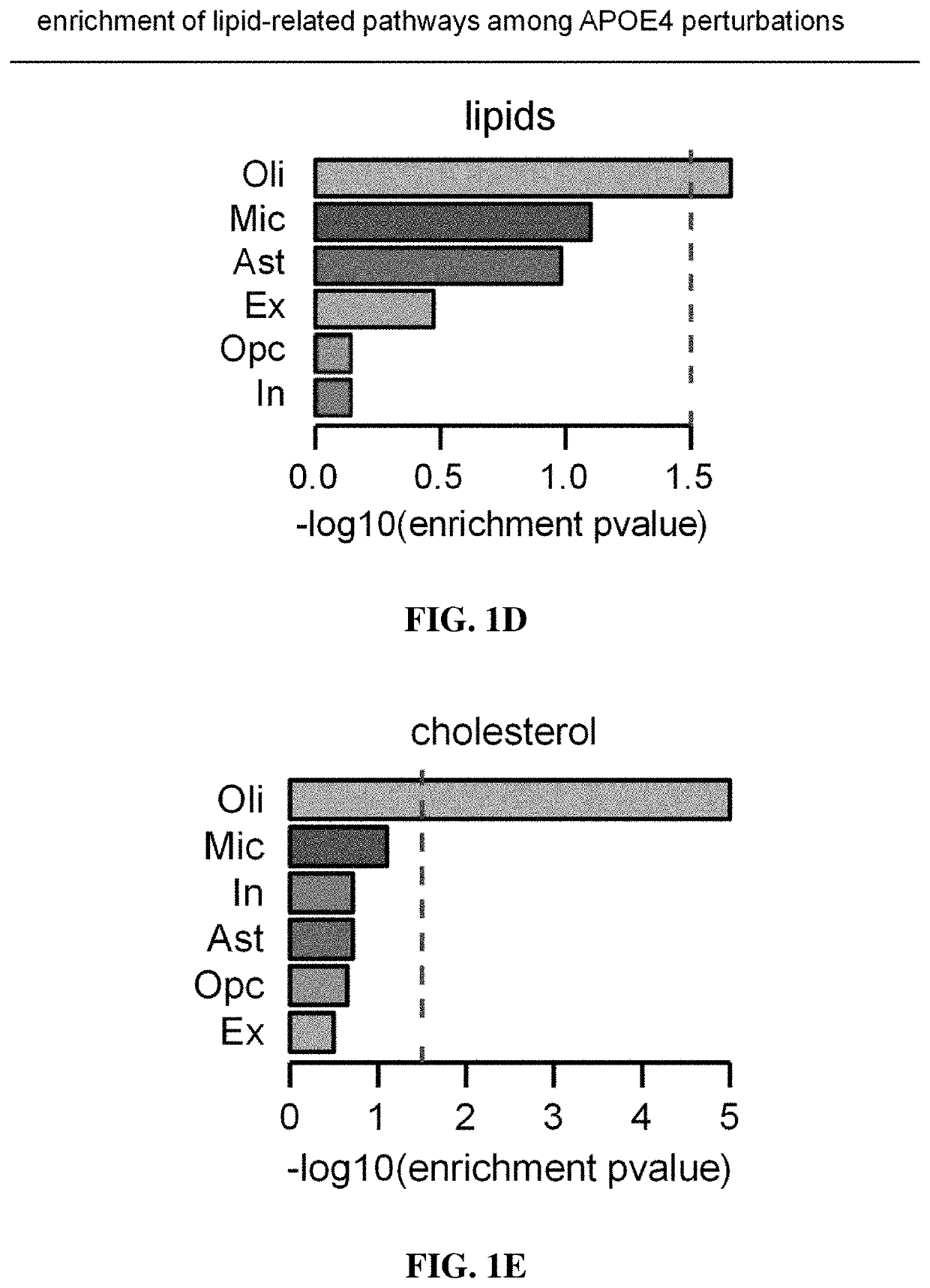Apoe4 impairs myelination via altered cholesterol biosynthesis and transport in oligodendroglia
a technology of oligodendroglia and apoe4, which is applied in the direction of nervous disorders, anhydride/acid/halide active ingredients, drug compositions, etc., can solve the problems of ad etiology and the underlying pathological mechanisms remain largely unknown, and achieve the effect of improving myelination and improving myelination
- Summary
- Abstract
- Description
- Claims
- Application Information
AI Technical Summary
Benefits of technology
Problems solved by technology
Method used
Image
Examples
example 1
airs Myelination Via Cholesterol Dysregulation in Oligodendrocytes
Introduction
[0073]Late onset Alzheimer's disease (AD) accounts for more than 95% of the disease, with approximately 50 million cases worldwide1. The heritability of AD is estimated between 50 and 80%, suggesting that after age, genetics is the dominant risk factor for AD2. Several genome-wide association studies (GWAS) have identified genetic variants associated with increased risk of AD3, 4. Among these variants, single nucleotide polymorphisms in the APOE gene show the strongest association with AD3-6. Across the human population, there are three alleles of the APOE gene (E2, E3, and E4). APOE3 is the most frequent allele (79%) and is not associated with increased AD risk. The APOE4 allele differs from APOE3 by a single amino acid (Cys112 to Arg112); however, one copy of APOE4 increases the risk of AD 3 to 4 times, and homozygous APOE4 / APOE4 carriers have an 8 to 12 fold increased risk of developing AD5, 8. The APOE...
example 2
umulation Induced by APOE4 Impairs Microglial Surveillance of Neuronal-Network Activity
Introduction
[0154]Although many glia cell-types may modulate and sculpt neuronal circuits, it is unclear how disease-associated genetic drivers enriched in glia, such as single nucleotide polymorphisms (SNPs), impact neuronal network dynamics. As brain-resident macrophages, microglia are highly reactive to disturbances within the brain microenvironment. This imposes limitations on the viral techniques that are typically employed in systems neuroscience to assess neuron-microglia communication. While the generation of transgenic mouse models harboring disease-associated alleles circumvents this technical challenge, the rapid pace of human genomic studies far outpaces the low throughput nature of deriving transgenic murine lines. This underscores the need for the development of human-based models to interrogate disease-associated genomic variants in complex multicellular platforms. Furthermore, thes...
PUM
| Property | Measurement | Unit |
|---|---|---|
| body weight | aaaaa | aaaaa |
| body weight | aaaaa | aaaaa |
| body weight | aaaaa | aaaaa |
Abstract
Description
Claims
Application Information
 Login to View More
Login to View More - R&D
- Intellectual Property
- Life Sciences
- Materials
- Tech Scout
- Unparalleled Data Quality
- Higher Quality Content
- 60% Fewer Hallucinations
Browse by: Latest US Patents, China's latest patents, Technical Efficacy Thesaurus, Application Domain, Technology Topic, Popular Technical Reports.
© 2025 PatSnap. All rights reserved.Legal|Privacy policy|Modern Slavery Act Transparency Statement|Sitemap|About US| Contact US: help@patsnap.com



